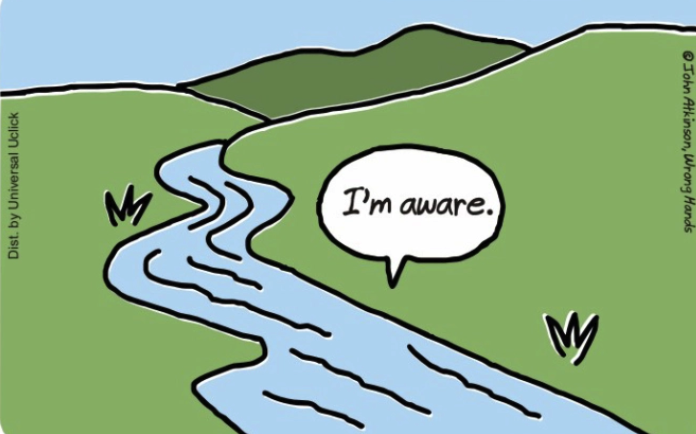The first Paris Fashion Week was held at Versailles Palace in October 1973 as a fundraiser to renovate the palace, a total cost that came to an estimated 60 million Francs. The three categories: haute couture, ready-to-wear, and Men’s Fashion were organized into one showing by the French Fashion Federation. At this time, President François Mitterrand and Minister of Culture Jack Lang hoped to use fashion to promote the French art of living. During the week, Parisian art and fashion become synonymous.
This year’s Paris Fashion Week, which took place during the first week of October, marked the event’s 50th anniversary. Many stuck with the classics: familiar, refreshing, wearable designs. They were similar to what we saw in 1973: Belgian designer Christian Wijnant’s and Stella McCartney’s lines (which is sustainable, animal-free, and incorporated seaweed yarn) were dominated with florals. Balenciaga chose to not stray from its signature style–wide shoulders, shaped but oversized black and browns, streetwear– as did Chanel, with its simple but elegant whites and blacks. Classic, even if monotonous.
We also saw those purely for-the-sake-of-art designs, like the nearly unwearable Maison Margiela pieces, Junya Watanbe’s sharp blacks, and Comme de Garcons’ colorful designs that look like a love child combining the art of Yayoi Kusama and Jackson Pollock.
Others chose to incorporate contrasting themes; these are the designs that captivated me. In 1973, for the Spring/Summer 1974 collections, motifs were classic, with neutrals, geometric shapes, and of course, florals (for spring- groundbreaking). Fifty years later, themes contrasted, oscillating between, or in some cases combining, classic neutrals and nature motifs with futuristic, contemporary styles.
Noir Kei Ninomiya blended themes of the natural world with futuristic touches, featuring a dress of white wildflowers, with mirrored face and body makeup and slicked back hair–the untouchable, dystopian themes conflicting and conversing with the unrefined and raw but soft natural themes.
Miu Miu had a similar contemporary attitude: Qatari-American artist Sophia Al-Maria created a backdrop of technological ruins inside the Palais d’Iena. The clothes themselves match this sense of disorganized, distressed intellectualism- clothes that were mismatched but still oddly cohesive. They reminded me of a chaotic college student like my sister, running late to classes, throwing on random everyday items from her small dorm closet that shouldn’t work, but somehow do.
Similarly yet uniquely, Valentino artfully combined florals with themes of modern industrialization, featuring floral cutouts–white, grays, denims–that reminded me of those paper snowflakes you can make by folding a paper and cutting it into patterns. These natural motifs were expressed in a futuristic, geometric, technological way, as if these patterns were made by a line of continuous uniform computer coding, the intricacy of the detailed patterns contrasting with the impersonal, machine-made feel of the repetition.
Balmain was another striking example. Their show featured three-dimensional constructions protruding off the clothing, a realistic and almost sculptural detailing of florals and leaves, so boldly incorporated that it affirmed that becoming immersed and joint with nature had become something entirely different- something commercial.The purposefulness, obvious effort, and perfection of it instead became something of structure and purpose rather than natural, especially as it was paired with contrasting designs: classic angular shapes along the silhouette of the body paired with polka dots.
Finally, the Hermes Spring/Summer 24 collection, created by Nadège Vanhée-Cybulski, approached the same theme of contradiction between invisible nature and purposely displayed styles. The items themselves featured accentuated bodily contours, heavy use of reds, and bold leathers: something undeniably modern for its use of the specific material and color; it wanted to be seen. The backdrop of the show was where the stark contrast between urbanization and naturalization once again made an appearance: it was against a set of meadows and tall grasses. It was uncultivated and undeveloped, not even like a floral garden, whose nature is curated and man-made, but raw and untouched–the exact antithesis of the styles shown.
In 1973, Fashion Week was a theatrical ordeal, with opening numbers, ballet dance performances, and shows by iconic performers like Josephine Baker and Liza Minelli. This theatrical element remains, but many opted to use it to make political statements. The Dior show by Maria Grazia Chiuri approached contrasting classic themes with technology in a way similar to but the exact opposite ofHermes’s- contrasting the design themselves to the setting. It was held with the backdrop of a video art installation by Elena Bellantoni that displayed feminist statements like “I Don’t Belong To Anyone Else,” “My Body Is Not A Product,” and “I Am Not Your Doll” that were projected against a pop-art Andy Warhol-esque electrical screen backdrop of block letters, yellow, and magenta. The pieces themselves included transparent dresses, blazers, gowns, skirts, and black coats over white shirts. Although these designs remained classic and true to Dior, they were beautifully, powerfully, tastefully contrasted with a bold backdrop that departed from those complacent, docile neutrals.
Conversation between new and old was also present in the nostalgic themes, something that is always seen in shows, regardless of the time. The 1973 show saw nostalgic elements of the Roaring Twenties, with the makeup, the feather plumes, and the boyish-cut dresses that you would have seen in a Gatsby-like setting, like the 1920s-style long, gauzy neutrals that defined Givenchy’s line and looked like something that Daisy Buchanan would have worn. We have also seen the increased popularity of the themes of the 20s: the extravagance, the maximalist fashion through the resurgence of Schiaparelli (my consistent favorite). Known for surrealist, Dali-esque themes in fashion and incorporation of the human body in her designs in the 20s, they did not disappoint for their S/S 24 lines as they combined retention of iconic style with innovation. We saw this 20s theme in Yves Saint Laurent as well, which in addition to its classic all neutrals, suits, and cargo material, decided to incorporate feather plume headpieces.
Nostalgia has also changed in the past 50 years; what was present in the 1970s is now nostalgia. This was another theme we saw, featured not only in Mugler’s show, which highlighted theatrical and geometric designs, large 70s themed sunglasses, and wind machines: unexpectedly, Louis Vuitton also harnessed nostalgia in its show. Louis Vuitton featured patterns resembling those popular in the 70s, with a retro aesthetic, checkered and striped prints, and heavy use of leather. It featured themes of deconstruction of pattern as well, of the breaking down into something simpler, from a plaid blue skirt that resembles those handwoven thin towels I can only find in Indian markets paired with a top another shade of blue, with stripes going one way, the lines and colors similar, but different enough to create art in itself. Another piece featured a rigid white top of satiny material, with black and white candy-cane striped hems, paired with a black and white bag and shoes. These pieces had entirely different aesthetics but possessed the same deconstruction of color and form that accentuated the slight differences in the components of the parts of the look.
One brand, one of my favorites, that thoroughly confused but also fascinated me this year was Vivienne Westwood. Known for meshing classic femininity with new-age, contemporary designs, her show did not disappoint, and was arguably the most diverse. Though at times I failed to see continuity, that is precisely what drew me in further. The contemporary nature was reminiscent of this year’s Miu Miu line, and mismatched-ness was reminiscent of this season’s Louis Vuitton. The aesthetic was far from surface level: I had to search for it. Each design, each combination, was a delicate and complex mix of modernity, elegance, and chaos, from the classic Westwood white dress to bright denim and leather looks. It was raw and innovative while deconstructing silhouettes with classic prints and patterns, reconstructing them for modernity, while preserving some tradition–something extremely delicate that defines the skill of a designer.
Finally, my personal favorite of the show: Uma Wang, who captivated the fragile balance between avant-garde design with the hopeless human fascination with the far past. Her show was a beautiful display of an antiquated time none of us know, inspired by some dilapidated, dream-like version of Venetian culture, Sofia Coppola’s Beguiled, or the various hidden rooms in Charlotte Bronte novels. It exuded timelessness, elegance, and most beautifully, decay, with prettily distressed vintage fabrics, floppy lace hats, a dress that appears to be an old, crooked crinoline and one that resembles a nightgown- things you would only find in locked-away attics. Detailing included ribbons, drawstrings, and faded neutral colors like tans, creams, and blacks, but with the occasional neon, bright coral pink–a dye that wouldn’t have existed in that time period. Some might critique the inclusion of this color accent as tasteless, but to me, it is precisely what surprised me and made me fall in love with this line: the artful integration of almost tasteless modernity, of boldness and shock, into something so painfully, intangibly nostalgic.
Edited by Phoebe Clayton


